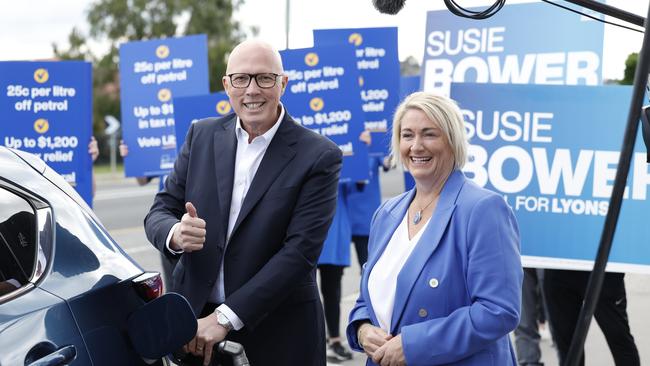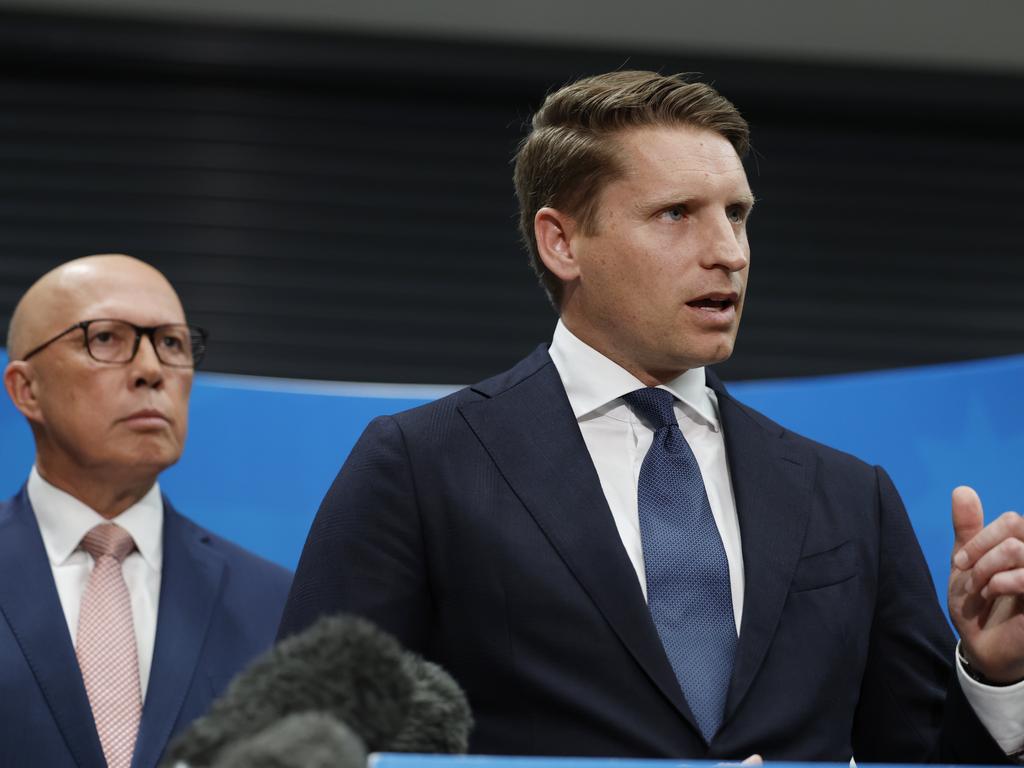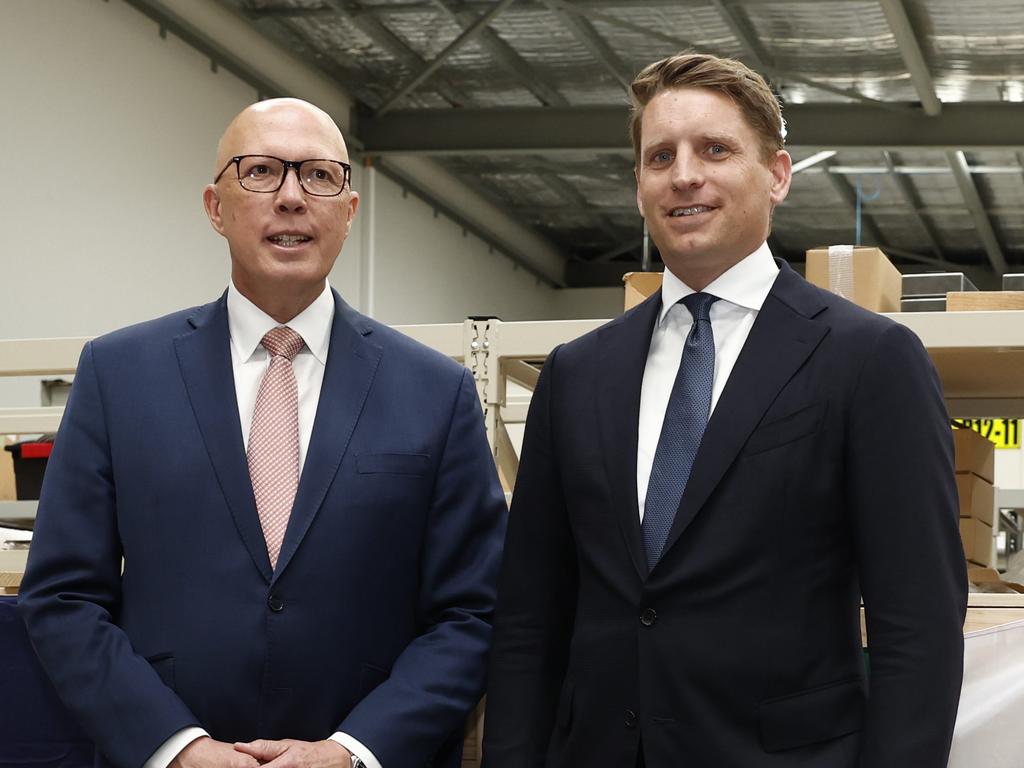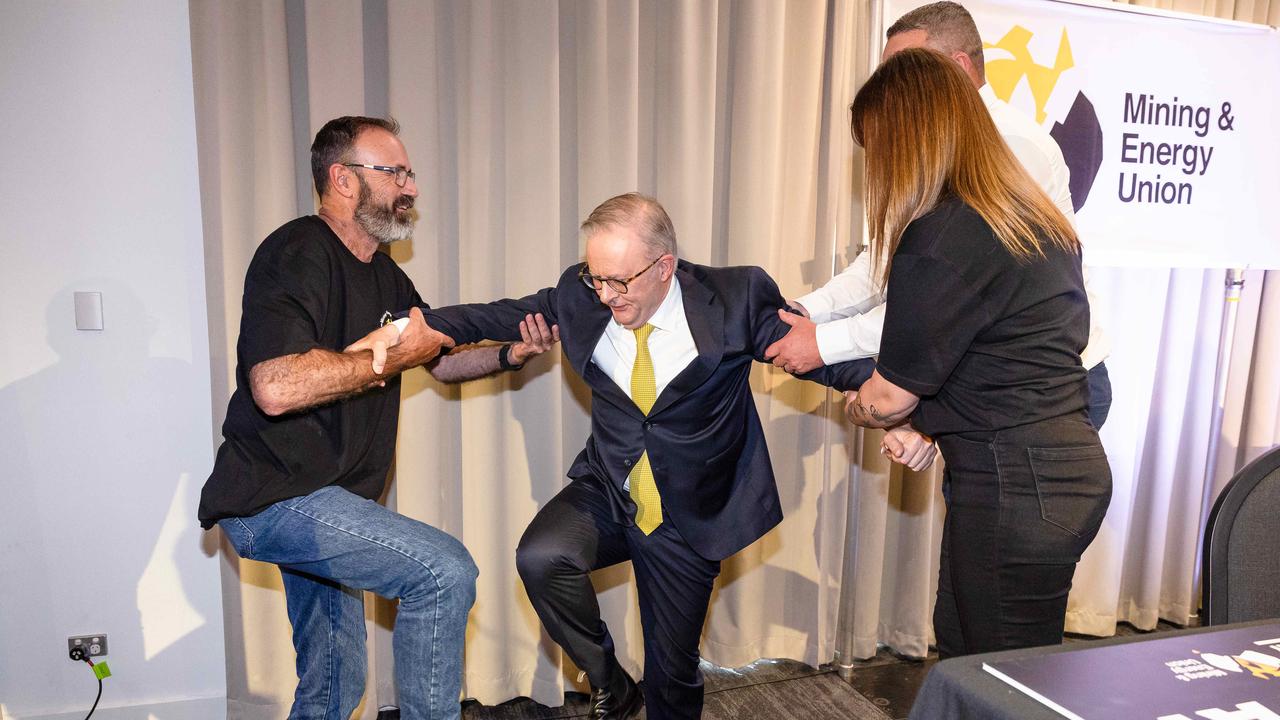Election 2025: Wayne Swan ‘bells the cat’ on Labor’s defence plan
ALP president Wayne Swan has come under fire for dismissing higher defence funding as unnecessary.

ALP president Wayne Swan has come under fire for dismissing higher defence funding as unnecessary after new analysis shows the Coalition would spend $29bn a year more on defence than Labor within a decade.
Peter Dutton said the former Labor treasurer in the Rudd and Gillard governments, which spent an average 1.77 per cent of GDP on defence each year, had “belled the cat” on Labor’s commitment to maintaining regional peace and stability.
“As we know, when Wayne Swan was the senior minister, money was ripped out of defence to the lowest level since 1939,” the Opposition Leader said.
“That’s what the Labor government does. They pull money out of defence, and we proposed a very significant investment into defence, because we do live in uncertain times.”
Mr Dutton has pledged an extra $21bn to lift defence spending to 2.5 per cent of GDP in five years – to be paid for by repealing Labor’s income tax cuts – and vowed to reach the US Trump administration’s 3 per cent target by 2035.
Despite Labor’s oft-repeated warnings of Australia’s unprecedented strategic circumstances, Mr Swan said the nation had no need for the promised funding boost. “We don’t think that amount of spending is needed,” he told Nine’s Today Show. “We are already increasing defence expenditure ... Theirs is not real. They can’t actually explain where it’s coming from or what it’s on.”

Mr Dutton provided little detail in his policy announcement on Wednesday on what his promised extra funding would be spent, offering only vague assurances of more drones, missiles and infrastructure investments in Western Australia.
Defence Minister Richard Marles hammered the announcement, saying the opposition hadn’t done the hard work to flesh out its policy. “Plucking a number out of thin air, putting it into a press release and calling that a defence policy is a joke,” he said. “You actually need to be thinking about what capabilities you are seeking to build, what you are seeking to acquire, and have deep thought about how you’re going to make that happen.”
Writing in The Australian, former Defence official Marcus Hellyer said the Coalition’s promised funding line was a significant boost above Labor’s, which would see defence funding hit around 2.33 per cent of GDP by 2033-34.
“By the end of the 10 years, the new funding line would be an annual increase of around $29bn on the Albanese government’s plan – from $100bn to $129bn,” the Strategic Analysis Australia research director said. “That’s real money.
“However, the policy is very thin on details.”

Dr Hellyer said coasting along with defence funding at 2 per cent of GDP, as Labor had, was unsustainable when the US was no longer committed to defending the international rules-based order. He said the Coalition’s funding pledge, if implemented, would help rebalance the defence budget, which has no new money for anything beyond promised nuclear submarines and frigates.
The AUKUS program has grown so alarmingly that its budget eclipses that of the air force, which Dr Hellyer said could not go on.
“Defence can’t simply absorb the cost of a ‘fourth service’ on two-and-a-bit per cent of GDP,” he said.
Amid growing concerns over US isolationism under Donald Trump, Dr Hellyer said Australia needed to spend more money on military self-reliance and hedge against the risk that the AUKUS plan might not be realised.
“Hedging could take a range of paths, from big options like the (admittedly US) B-21 long-range stealth bomber to new kinds of air and maritime drones and strike missiles that Australian industry can design and build at scale, to our own satellite surveillance systems, to greater national resilience,” Dr Hellyer said.

KordaMentha defence lead Mike Kalms said taxpayers also deserved to know Defence was spending their money efficiently.
He said for every $100m spent on maintaining defence equipment, as little as $30m went to tool-wielding tradesmen.
“Seventy per cent of those dollars go to bureaucrats, project managers, schedulers, procurement, HR, admin, security, IT support – the list goes on,” he said.
“This isn’t efficient and it isn’t the behaviour of a ‘match-fit’ Defence organisation ready to respond to conflict in our near region.”
He said $5bn of the current $59bn defence budget should be redirected from back office support to weapons, equipment and warfighting personnel.






To join the conversation, please log in. Don't have an account? Register
Join the conversation, you are commenting as Logout